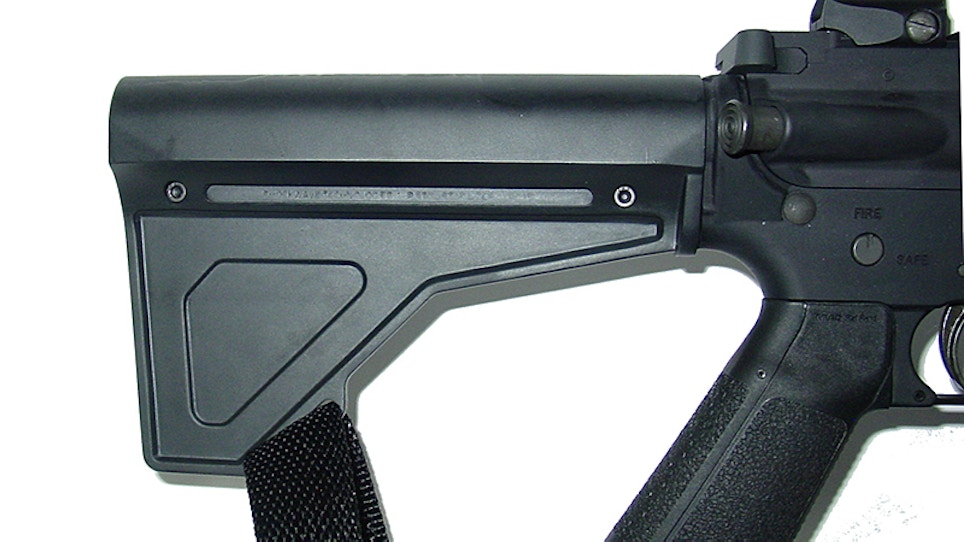The Bureau of Alcohol, Tobacco, Firearms and Explosives has written yet another interpretation on a new AR pistol brace design that could be another step to the regulating agency eventually backtracking on the legality of shouldering an AR pistol.
In a response to Martin Ewer who submitted his design for the "Blade" AR Pistol Stabilizer, the Firearms Technology Branch told Ewer the Blade would not change the classification of the pistol to an NFA "firearm" as long as it "was used as originally designed and not as a shoulder stock."
Critics said earlier stories that ATF seemed backing off its March 2014 interpretation of shouldering the Sig Pistol Stabilizing Brace were off base, arguing the agency was ruling on a shotgun, not an AR platform.
But the letter to Ewer seems to indicate the ATF plans to make certain uses of pistol stabilizing braces illegal, forecasting a tough fight for gun rights proponents and a major shock to an industry revolutionized by the SB15 brace.
Adam Kraut at the Prince Law Offices blog put it this way:
The letter to FTISB stated that the device was not designed OR intended to enable a user to fire a weapon from the shoulder. So how does FTISB come to the conclusion that an end user shouldering the Stabilizer turns the firearm into an item regulated by NFA? ... The issue with FTISB’s latest determination is they are attempting to classify a firearm based on the end users use of an attachment designed and intended to be used in a certain way.
And Kraut posed this scenario...
Allow me to pose this hypothetical to you using the logic in this latest determination letter. If an individual attaches the Stabilizer to his AR pistol, goes to the range, shoots it as the manufacturer intended and then hands it to his friend who shoulders it, did it just become an illegal short barreled rifle? Given what FTISB put in their determination letter it would seem that way. This begs the question, is ATF actually classifying the firearm based on what it is or how it MIGHT be used?
Needless to say, the feds are closing in on the AR pistol market.
UPDATE: It seems the Prince Law Firm has gotten its hands on another letter dated Nov. 10 that further confirms a shift in thinking on the ATF's consideration of the SB-15 Sig Brace and its use even on AR pistols. According to the ATF letter, making an AR pistol with a Sig Brace attached with the "intent" to shoulder it, makes the pistol an SBR.
FTISB correctly finds that the SIG Brace is NOT designed or intended for firing a weapon from the shoulder. In its original determination letter, the Firearms Technology Branch (FTB) found that the brace when attached to a firearm did not convert it to be fired from the shoulder and would not alter the classification of the firearm.FTISB says the same thing in the beginning of this new determination but goes on to say that if it is USED as a shoulder stock the classification changes. We are left to extrapolate that FTISB arrives at this conclusion because the user must have designed or redesigned or made or remade the firearm to be fired from the shoulder. Of course, they are careful to not acknowledge where that act actually occurs which poses all kinds of issues.
It's still unclear what this means for owners of pistols equipped with Sig Braces and whether they can get in hot water if they shoulder them. Some are clinging to the idea that the new letters change nothing. But legal experts say this could be seen as the ATF trying to walk back its March 2014 determination that shouldering an AR pistol with an SB-15 doesn't change the rules on the firearm. Could this be the nail that bursts the AR pistol bubble?






